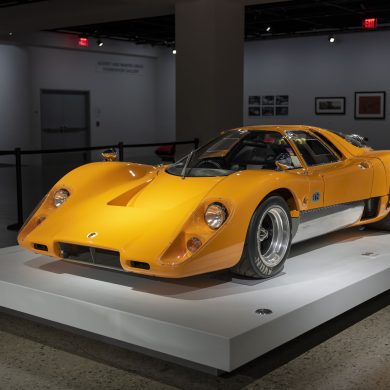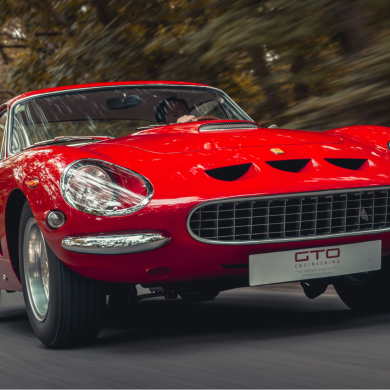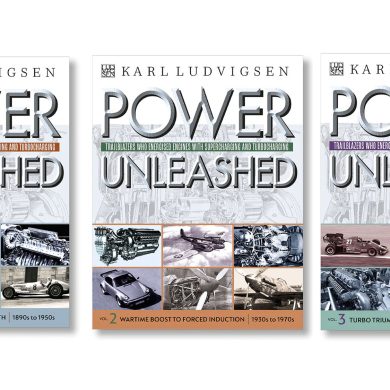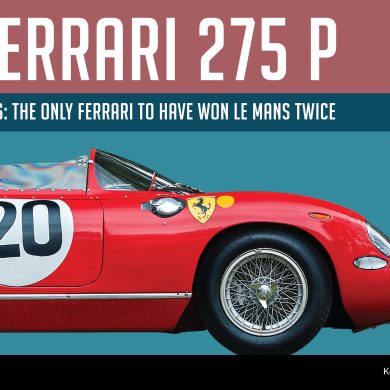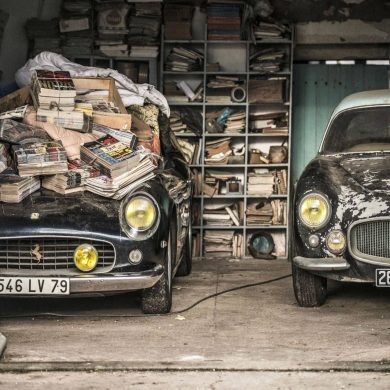By Paul Chenard, Racing History Collector and Illustrator
I’ve been collecting vintage toys since 1982. I started slowly and methodically, partly for lack of information, mostly for lack of finances.
I used to collect any metal transportation toy that I found interesting, anything that caught my eye (and that I could afford). In the late 80s, a Canadian-made Chime tin wind-up race car toy from about 1935 came into my collection and suddenly, I had to find more race car toys. I slowly traded away my other toys to acquire more metal (tin and die cast) race cars.

Chime Land Speed Racer, circa 1935, tin wind-up (Canada)
There has been an amazing diversity of new and old toys cars available. I’ve learned that in vintage toys, the German, French and British toys are the most coveted (die cast and wind-up tin). Japanese tin toys (tin, battery operated and wind-up) from the 50s, 60s and 70s are extremely collectible, with the battery-operated 50’s Atom Jet Racer selling for more than $3500 US.Note of caution: tin Chinese reproductions of the Japanese toys are colourful but have not much value to collectors.
The French firm CIJ created a large stunning toy model of the famous late 1920’s Alfa Romeo P2 racer at approximately 1/10 scale. It comes in red, blue, white, green, yellow, and possibly even more colours. It copies the proportions and detail of the original perfectly, and even has functional steering. One of these in good condition can sell for easily $4000 to $5000 today; you can add $2000 to that if the box is included.
If purchasing brand new toys for your collection, it’s good not to confuse toys with limited-edition collectibles. Toys are sold to be played with, while limited-edition collectibles are sold to be displayed. I have five-year-old Hot Wheels cars that have increased their value 20-fold; I don’t know of any collectibles that have that kind of return on their original purchase price. Always keep the packaging of your new toy; it can add up to 50 per cent to the value of the toy in the future.

Mercury #56 Mercedes Formula 1, circa 1956, die cast (Italy)
When you start collecting, take your time and learn as much as you can. Going to antique stores is a great way to start. You hold and inspect an antique toy without having to purchase it. Speaking to the more specialized dealers of antique toys may also get you some valuable information, and help them track down what you are looking for.
The web, books, magazines and catalogues (new and used) are great sources of information, some general and others very specific in their focus. Some magazines publish an annual price guide, which is important when determining the value of your finds. I have learn of the different toy cars produced by certain makers, and I have sought out their products. That is how I discovered the beautiful line of Mercury, Italy Grand Prix race cars and focused on acquiring some for as little as $50.
Yard sales and flea markets can be good places to pick up something interesting. A mint and boxed Technofix tin wind-up Rallye 66 racetrack (now worth $300-$400) was originally purchased at a local flea market for $10.00.

Technofix Rallye 66, circa 1966, tin wind-up (Germany)
At auctions, there could be some toys in lots, but inspect them, make sure they’re in good condition and decide at the beginning how much you are willing to pay out. There are more and more Internet auction sites available; if you have studied the subject you are collecting well, and you are willing to wait for a reasonably priced collectable to come up, you can do really well in these auctions. I know I have.
There are basic rules of collecting. Here are some of most important ones:
– If you can, pick a theme for your collection. It helps focus your researching and your toy hunting.
– Use common sense.
– Learn as much as you can before making your purchases.
– Never pay more than you feel comfortable in paying out for an item.
– Never acquire a broken toy, unless it’s free, or that you absolutely have to have it.
– Have fun!
[Source: Automobiliart.com]



